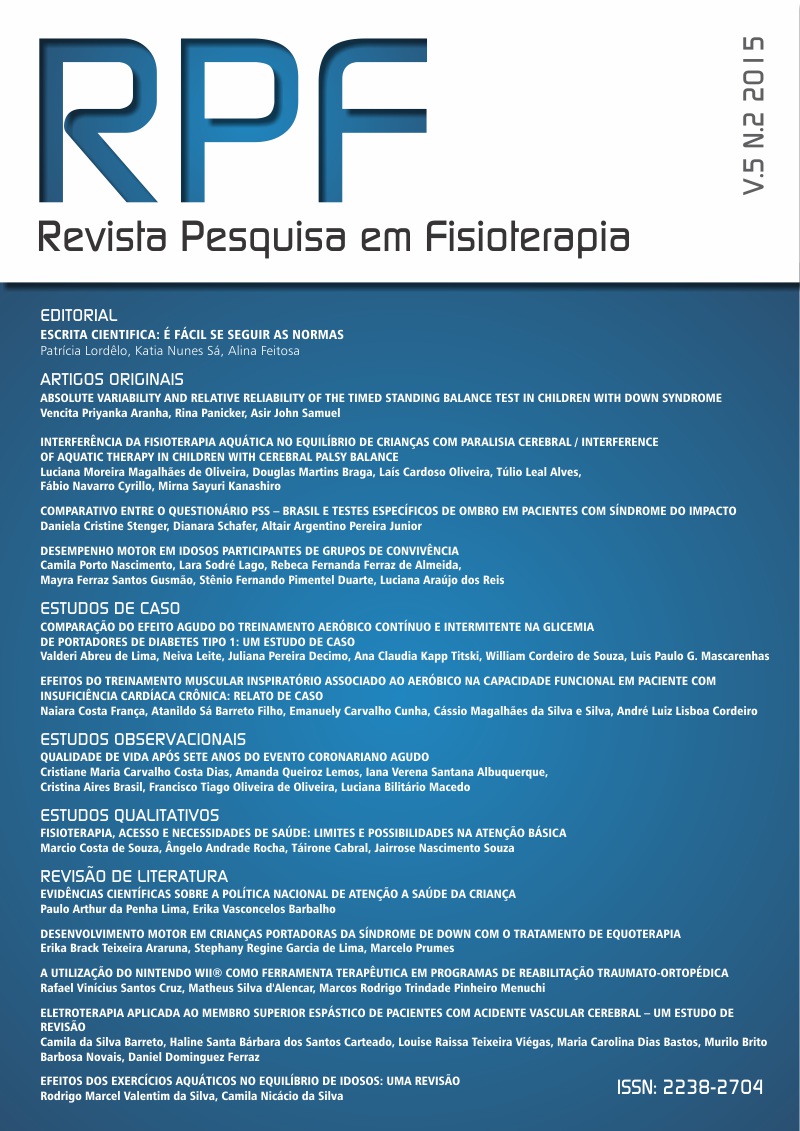INTERFERENCE OF AQUATIC THERAPY IN CHILDREN WITH CEREBRAL PALSY BALANCE
DOI:
https://doi.org/10.17267/2238-2704rpf.v5i2.620Keywords:
Paralisia Cerebral, Hidroterapia, Equilíbrio PosturalAbstract
Purpose: To investigate the interference of aquatic physical therapy on balance of children with Cerebral Palsy (CP). Methods: This was a controlled clinical trial, descriptive and analytical and quantitative. 560 records were analyzed, and the final sample consisted of 15 children with CP spastic diparetic, classified as level II by the GMFCS, which were followed at Associação de Assistência à Criança Deficiente (AACD) in São Paulo. The children selected were evaluated in the pre and post times, using the Functional Scale Berg (Berg), Dynamic Gait Index (DGI), Time Up and Go (TUG) and Surface Electromyography (EMG) of the anterior tibialis and gastrocnemius muscles. Then we were divided non-randomly in the experimental group (EG) and control group (CG). The EG was submitted to aquatic physical therapy protocol of 16 sessions, 35 minutes long, 2 times a week for 8 weeks. Results: Only the EG had a statistically significant improvement with respect to the values obtained in Berg, DGI and TUG. EMG was increased muscle activation in transfers from sitting to standing and standing to sitting and decrease in standing posture without support. Conclusion: The aquatic therapy is an effective resource in the rehabilitation of children with CP balance, promoting greater muscle activation of tibialis anterior and gastrocnemius in transfers from sitting to standing and standing to sitting and decrease in standing posture without support, with consequent improved speed and change gait performance on certain tasks.



